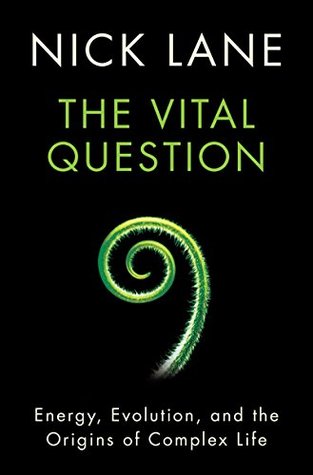More on this book
Community
Kindle Notes & Highlights
by
Nick Lane
Read between
January 20 - January 27, 2020
And then came the first of three major revolutions that have wracked our view of life in the past half century. This first was instigated by Lynn Margulis in the summer of love, 1967. Complex cells did not evolve by ‘standard’ natural selection, Margulis argued, but in an orgy of cooperation, in which cells engaged with each other so closely that they even got inside each other. Symbiosis is a long-term interaction between two or more species, usually some sort of trade for wares or services. In the case of microbes, those wares are the substances of life, the substrates of metabolism, which
...more
Woese’s tree depicts the divergence of one fundamental gene in the three domains of life. Margulis, in contrast, has genes from different species converging together in the mergers and acquisitions of endosymbiosis. Depicted as a tree, this is the fusion, not the bifurcation, of branches – the opposite of Woese. They can’t both be right! Neither do they both have to be totally wrong. The truth, as so often in science, lies somewhere between the two.
Put another way, what kind of cell picked up mitochondria? The standard textbook view is that it was quite a sophisticated cell, something like an amoeba, a predator that could crawl around, change shape and engulf other cells by a process known as phagocytosis. In other words, mitochondria were acquired by a cell that was not so far from being a fully fledged, card-carrying eukaryote. We now know that’s wrong. Over the last few years, comparisons of large numbers of genes in more representative samples of species have come to the unequivocal conclusion that the host cell was in fact an
...more
This radical proposition – complex life arose from a singular endosymbiosis between an archaeon host cell and the bacteria that became mitochondria – was predicted by the brilliantly intuitive and free-thinking evolutionary biologist Bill Martin, in 1998, on the basis of the extraordinary mosaic of genes in eukaryotic cells, a mosaic largely uncovered by Martin himself.
Martin predicted that complex life arose through a singular endosymbiosis between two cells only. He predicted that the host cell was an archaeon, lacking the baroque complexity of eukaryotic cells. He predicted that there never was an intermediate, simple eukaryotic cell, which lacked mitochondria; the acquisition of mitochondria and the origin of complex life was one and the same event. And he predicted that all the elaborate traits of complex cells, from the nucleus to sex to phagocytosis, evolved after the acquisition of mitochondria, in the context of that unique endosymbiosis. This is
...more
If there were a Nobel Prize in Biology, nobody would be a more deserving recipient than Bill Martin.
These vast deposits indicate not just life but photosynthesis. Not the familiar form of photosynthesis that we see around us in the green leaves of plants and algae, but a simpler precursor. In all forms of photosynthesis, the energy of light is used to strip electrons from an unwilling donor. The electrons are then forced on to carbon dioxide to form organic molecules. The various forms of photosynthesis differ in their source of electrons, which can come from all kinds of different places, most commonly dissolved (ferrous) iron, hydrogen sulphide, or water.
But now imagine that lateral gene transfer predominates. So we sequence the ribosomal RNA, and it tells us we are dealing with a bird. Only now do we look at this ‘bird’. It turns out to possess a trunk, six legs, eyes on its knees, fur; it produces eggs like frogspawn, lacks wings and howls like a hyena. Yes, of course that is absurd; but this is precisely the problem that we face with bacteria. Monstrous chimeras regularly stare us in the face; but because bacteria are typically small and morphologically simple, we don’t scream. Nonetheless, in their genes bacteria are almost always
...more


